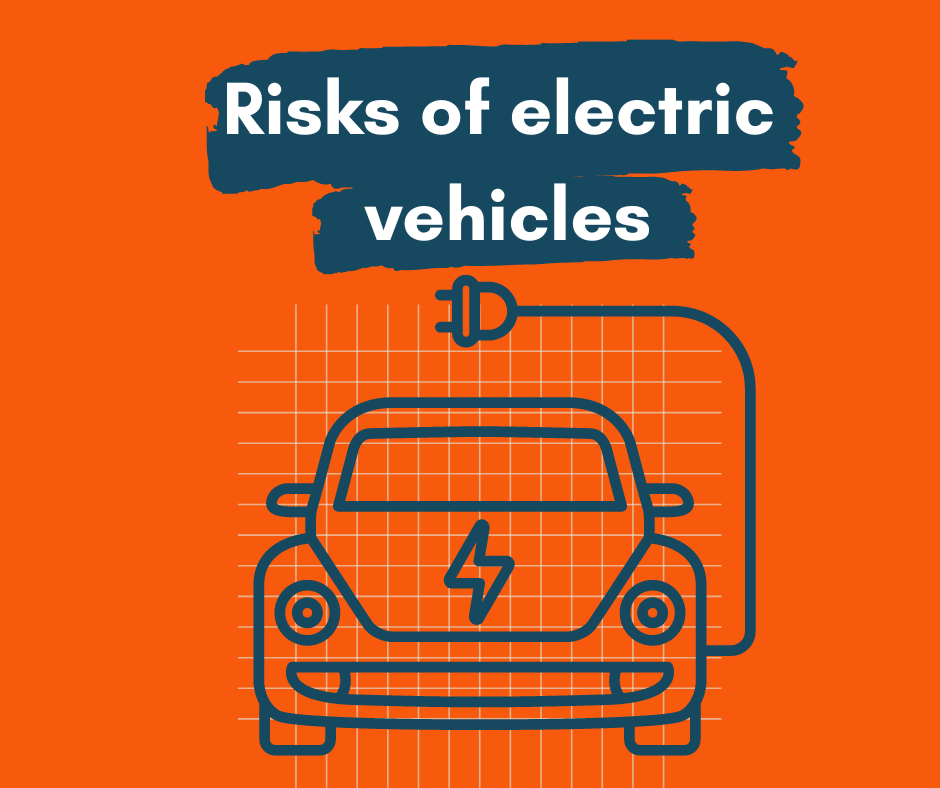
Cyber Threat to Electric Vehicles A Growing Concern
Cyber threat to electric vehicles isn’t just a futuristic fear; it’s a present-day reality. These sophisticated machines, packed with interconnected systems and software, present a tempting target for cybercriminals. From hacking into charging stations to exploiting vulnerabilities in onboard software, the potential consequences are significant – ranging from minor inconveniences to potentially catastrophic failures. This post dives deep into the various ways electric vehicles are vulnerable and what we can do about it.
We’ll explore the weak points in communication protocols, the dangers lurking within software and firmware, and the security risks associated with charging infrastructure and over-the-air updates. We’ll also touch upon the crucial aspects of data security and privacy, as well as the physical security of the vehicles themselves. Finally, we’ll consider the role of cyber insurance in mitigating these emerging risks.
Get ready for a comprehensive look at the cyber threats facing the electric vehicle revolution!
Vehicle Communication Systems Vulnerabilities
Electric vehicles (EVs) are increasingly reliant on sophisticated communication systems to function. These systems, while offering numerous benefits like improved performance and driver assistance features, also introduce significant security vulnerabilities that can be exploited by malicious actors. Understanding these vulnerabilities is crucial for developing effective mitigation strategies.
Common Communication Protocols and Their Weaknesses
EVs utilize a variety of communication protocols, each with its own set of inherent weaknesses. These protocols handle everything from controlling the motor and battery to enabling features like remote diagnostics and over-the-air updates. Common protocols include CAN (Controller Area Network), LIN (Local Interconnect Network), FlexRay, and Ethernet. CAN, for example, while robust and widely used, lacks built-in security mechanisms, making it susceptible to various attacks.
LIN, often used for less critical functions, may also be vulnerable if not properly secured. Ethernet, while offering higher bandwidth, presents its own set of challenges regarding security implementation. The lack of robust authentication and encryption in many implementations across these protocols represents a major security risk.
Types of Attacks Against Vehicle Communication Protocols
Several attack types can target these communication protocols. A common one is a Denial-of-Service (DoS) attack, where an attacker floods the network with spurious messages, disrupting normal operation. This could manifest as a complete system shutdown or the disabling of critical functions like braking. Another threat is eavesdropping, where attackers passively monitor communication to steal sensitive data such as vehicle location or driving habits.
More insidious are manipulation attacks, where an attacker injects false data to alter vehicle behavior. For instance, an attacker could manipulate speed signals, potentially causing accidents. Finally, replay attacks involve capturing and retransmitting legitimate messages to deceive the vehicle’s systems.
Hypothetical Attack Scenario: CAN Bus Manipulation
Imagine a scenario targeting the CAN bus, a crucial communication network in most EVs. An attacker gains access to the CAN bus, perhaps through a compromised onboard diagnostic (OBD) port or a wireless vulnerability. They then inject malicious messages into the network, specifically targeting the motor control unit. By manipulating speed and torque signals, the attacker could cause the vehicle to accelerate unexpectedly or decelerate abruptly, potentially leading to a dangerous situation for the driver and other road users.
The impact could range from minor inconvenience to serious injury or even fatality.
Methods for Improving the Security of Vehicle Communication Systems
Improving the security of EV communication systems requires a multi-layered approach. This includes implementing robust authentication and encryption protocols, employing intrusion detection systems to monitor network traffic for suspicious activity, and regularly updating vehicle software to patch known vulnerabilities. Furthermore, secure coding practices and rigorous testing are essential throughout the development lifecycle.
| Protocol | Weakness | Attack Type | Mitigation Strategy |
|---|---|---|---|
| CAN | Lack of inherent security mechanisms, broadcast nature | DoS, Manipulation, Eavesdropping | Message Authentication Codes (MACs), Encryption (e.g., using secure CAN protocols) |
| LIN | Limited bandwidth, simpler security implementations | Eavesdropping, Replay attacks | Encryption, checksums, access control |
| Ethernet | Complex network management, potential for vulnerabilities in network stack | DoS, Man-in-the-middle attacks | Firewalls, intrusion detection systems, secure network segmentation |
| Wireless Protocols (e.g., Bluetooth, Wi-Fi) | Vulnerable to various wireless attacks | Eavesdropping, Denial of Service, Man-in-the-Middle | Strong encryption (e.g., WPA3), access control, regular software updates |
Onboard Software and Firmware Security
Electric vehicles (EVs) are increasingly complex systems, relying heavily on sophisticated software and firmware controlling everything from battery management to motor control and driver-assistance features. This reliance on software introduces a significant attack surface, making onboard software and firmware security a critical concern for both manufacturers and consumers. A vulnerability in even a seemingly minor component could have cascading effects, compromising the entire vehicle’s functionality and safety.The intricate nature of EV software, encompassing millions of lines of code across numerous interconnected modules, presents a considerable challenge in ensuring its security.
Moreover, the increasing connectivity of EVs through various communication networks expands the potential entry points for malicious actors.
Common Vulnerabilities in EV Software and Firmware
Software and firmware vulnerabilities in EVs share similarities with those found in other embedded systems, but the consequences of exploitation can be far more severe due to the critical nature of vehicle operation. Common vulnerabilities include buffer overflows, memory corruption errors, insecure coding practices, and inadequate authentication mechanisms. These vulnerabilities can be exploited to gain unauthorized access to the vehicle’s systems, manipulate its functions, or even cause physical harm.
For example, a buffer overflow in the battery management system could lead to overheating or even a fire, while compromised motor control software could cause a loss of control.
Consequences of Exploiting EV Software/Firmware Vulnerabilities
The potential consequences of exploiting vulnerabilities in EV software and firmware range from minor inconveniences to catastrophic failures. Successful attacks could lead to:* Data breaches: Sensitive driver data, including location history, driving habits, and personal information, could be stolen.
System malfunctions
Critical vehicle systems, such as braking, steering, or acceleration, could be compromised, resulting in accidents.
Remote control
Malicious actors could gain remote control of the vehicle, potentially leading to theft or unauthorized use.
Denial of service
The vehicle’s functionality could be disrupted, rendering it inoperable.
Physical damage
Exploiting vulnerabilities in systems like the battery management system could cause fires or other physical damage.
Real-World Incidents of Exploited EV Software/Firmware Vulnerabilities
While specific details of successful attacks on EV software/firmware are often kept confidential for security reasons, several instances of vulnerabilities being discovered have been publicly reported. For example, researchers have demonstrated vulnerabilities in certain EV communication protocols that could allow attackers to remotely unlock doors or disable certain features. The automotive industry is actively working to address these vulnerabilities, but the ever-evolving threat landscape necessitates continuous vigilance.
Strategies for Securing Onboard Software and Firmware
Securing onboard software and firmware requires a multi-layered approach encompassing secure coding practices, robust testing, and regular updates.Secure coding practices are crucial to minimize vulnerabilities. These include:
- Input validation: Thoroughly validate all inputs to prevent buffer overflows and other injection attacks.
- Memory safety: Use memory-safe programming languages and techniques to prevent memory corruption errors.
- Secure authentication and authorization: Implement strong authentication and authorization mechanisms to prevent unauthorized access.
- Regular security audits and penetration testing: Conduct regular security audits and penetration testing to identify and address vulnerabilities.
- Secure updates and patching: Implement a robust system for deploying security updates and patches promptly.
- Least privilege principle: Grant only the necessary permissions to each software component.
- Defense in depth: Employ multiple security layers to protect against attacks.
Regular updates are essential to address newly discovered vulnerabilities and improve the overall security posture of the vehicle’s software and firmware. Manufacturers should implement a robust over-the-air (OTA) update mechanism to deliver security patches and new features efficiently and securely. This requires careful consideration of security protocols to prevent unauthorized modification of updates.
Charging Infrastructure Security Risks

The rise of electric vehicles (EVs) necessitates a robust and secure charging infrastructure. However, the interconnected nature of these charging systems introduces significant security vulnerabilities that could have far-reaching consequences, from individual user inconvenience to large-scale grid instability. Understanding these risks is crucial for developing effective mitigation strategies.
Types of EV Charging Infrastructure and Their Security Implications
Electric vehicles utilize various charging methods, each presenting unique security challenges. Level 1 charging uses a standard household outlet, offering the slowest charging speed but also the simplest infrastructure. Level 2 charging employs dedicated wall-mounted units or charging stations, providing faster charging rates. DC fast charging stations deliver the highest charging power, enabling rapid replenishment but also introducing more complex communication protocols and higher potential attack surfaces.
The security implications increase with the complexity and speed of the charging method. Level 1 charging presents minimal security concerns as it relies on existing home electrical systems. However, Level 2 and DC fast charging stations, being network-connected, are vulnerable to various cyberattacks.
Security Vulnerabilities of Different Charging Methods
Level 1 charging, due to its simplicity, poses minimal security risks. The primary concern is physical access to the outlet, potentially leading to theft or vandalism. Level 2 charging stations, often communicating over networks like Wi-Fi or Ethernet, are susceptible to malware infections, unauthorized access, and data breaches. DC fast charging stations, typically utilizing more sophisticated communication protocols like OCPP (Open Charge Point Protocol), are vulnerable to more sophisticated attacks, including denial-of-service (DoS) attacks that could disrupt charging availability and man-in-the-middle (MitM) attacks that could compromise user data or even manipulate charging parameters.
The increased power handling capabilities of DC fast chargers also introduce the risk of physical damage through malicious control manipulation.
Potential Attack Vectors Targeting Charging Stations and Their Associated Networks
Attackers could exploit several vulnerabilities in EV charging infrastructure. These include exploiting weaknesses in the communication protocols used between the charging station and the charging network, compromising the station’s software or firmware, targeting the payment systems integrated into the stations, or even physically tampering with the charging equipment. A successful attack could range from data theft and financial fraud to disrupting charging services, causing inconvenience to EV users and potentially overloading the power grid.
Compromising network infrastructure connecting multiple charging stations presents a significant risk of widespread disruption.
Recommendations for Securing Charging Infrastructure
A multi-layered security approach is essential to protect EV charging infrastructure. This includes robust authentication and authorization mechanisms, secure communication protocols, regular software updates and patching, and physical security measures to prevent tampering. Implementing intrusion detection and prevention systems is crucial to monitor network traffic and identify malicious activity. Regular security audits and penetration testing can identify vulnerabilities before they are exploited.
| Charging Type | Vulnerability | Mitigation |
|---|---|---|
| Level 1 | Physical access, theft | Secure location, physical security measures |
| Level 2 | Network vulnerabilities, malware, data breaches | Secure network configuration, firewall, intrusion detection, regular software updates |
| DC Fast Charging | Sophisticated attacks (DoS, MitM), communication protocol vulnerabilities | Strong authentication, encryption, regular security audits, penetration testing, robust access control |
Data Security and Privacy Concerns
Electric vehicles (EVs) are increasingly sophisticated, collecting vast amounts of data about our driving habits, vehicle performance, and even our location. This data collection, while offering benefits like improved driver assistance and predictive maintenance, also raises significant concerns about data security and privacy. The potential for misuse of this sensitive information, coupled with the inherent vulnerabilities of connected vehicles, demands a careful examination of the risks involved.The types of data collected by EVs are extensive and vary depending on the manufacturer and vehicle features.
This includes location data (GPS coordinates, speed, route history), vehicle performance data (battery charge level, motor temperature, tire pressure), driver behavior data (acceleration patterns, braking habits, steering inputs), and even potentially personal information linked to the driver’s account. The potential for misuse is significant; this data could be used for targeted advertising, insurance profiling, unauthorized tracking, or even identity theft.
Privacy Implications of EV Data Collection
The privacy implications of this extensive data collection are substantial. The constant monitoring of a driver’s location, for instance, could lead to unwarranted surveillance. Data breaches could expose sensitive personal information, leading to identity theft or financial loss. Furthermore, the aggregation of data from many vehicles could create detailed profiles of individuals and their daily routines, potentially revealing private information without their explicit consent.
The lack of transparency about data collection practices and the absence of robust data protection measures exacerbate these privacy risks.
Electric vehicles are increasingly vulnerable to cyberattacks, potentially leading to everything from stolen data to complete system failures. Developing robust security systems requires efficient and adaptable software development, which is where understanding the power of platforms like Domino, discussed in this insightful article on domino app dev the low code and pro code future , becomes crucial. These advancements can help us build the secure, reliable software needed to mitigate the growing cyber threat to EVs.
Methods for Ensuring Data Confidentiality, Integrity, and Availability
Ensuring the confidentiality, integrity, and availability (CIA triad) of EV data requires a multi-layered approach. This involves implementing robust encryption protocols to protect data both in transit and at rest. Regular security audits and penetration testing are crucial to identify and address vulnerabilities. Furthermore, strong access control measures are necessary to limit access to sensitive data only to authorized personnel.
Data minimization – collecting only the necessary data – is also vital to reduce the risk of breaches and minimize privacy intrusions. Finally, implementing a comprehensive incident response plan is critical to quickly contain and mitigate the impact of any data breach.
Hypothetical Data Breach Scenario and Consequences
Imagine a scenario where a sophisticated cyberattack compromises the onboard computer of a fleet of EVs. The attackers gain access to the vehicle’s data logs, including GPS location data, driver profiles, and financial transaction information linked to charging stations. The consequences are far-reaching. Drivers’ locations could be tracked in real-time, potentially leading to stalking or even physical harm.
Stolen financial information could be used for fraudulent transactions. The compromised driver profiles could be used for targeted phishing attacks or identity theft. The reputational damage to the EV manufacturer and the loss of trust among consumers would be immense, potentially causing significant financial losses. Such a breach would highlight the urgent need for enhanced security measures in the EV ecosystem.
Over-the-Air (OTA) Update Security
Over-the-air (OTA) updates are crucial for keeping electric vehicles (EVs) up-to-date with the latest software, features, and security patches. This process allows manufacturers to remotely deploy improvements and fixes, enhancing both functionality and safety. However, the very nature of OTA updates introduces significant security vulnerabilities that must be carefully addressed.The OTA update process in EVs typically involves several stages.
First, the vehicle checks for available updates via a cellular or Wi-Fi connection. If an update is found, the vehicle downloads the update package to onboard storage. Next, the vehicle verifies the integrity of the downloaded package using digital signatures and other cryptographic techniques. Finally, the vehicle installs the update, often requiring a reboot. This entire process needs to be robust and secure to prevent exploitation.
Potential Security Risks Associated with OTA Updates
Malicious actors could exploit vulnerabilities in the OTA update process to inject malicious code into the vehicle’s software. This could compromise various vehicle systems, potentially leading to safety hazards, data breaches, or even complete vehicle control. For example, an attacker might intercept the update package and modify it to include malware that allows remote access to the vehicle’s control systems or steals sensitive data.
Another attack vector could involve exploiting vulnerabilities in the vehicle’s communication protocols or update mechanisms themselves. The consequences of a successful attack could range from minor inconveniences like feature malfunctions to severe safety risks like compromised braking or steering.
Measures to Secure the OTA Update Process
Securing the OTA update process requires a multi-layered approach. This includes robust authentication and authorization mechanisms to verify the authenticity of the update server and the update package itself. Digital signatures and cryptographic hashing are essential for ensuring the integrity of the update package. Regular security audits and penetration testing are crucial to identify and address potential vulnerabilities before they can be exploited.
Furthermore, employing secure communication protocols, such as TLS/SSL, for all communication during the update process is paramount. Finally, implementing a rollback mechanism allows the vehicle to revert to a previous, known-good software version in case of a failed or compromised update.
A Secure OTA Update Process Flowchart
The following describes a secure OTA update process using a flowchart representation.
1. Vehicle Initiates Update Check
The EV periodically checks for available updates from the manufacturer’s server. This check utilizes a secure communication channel (e.g., HTTPS).
2. Server Authentication and Authorization
The vehicle verifies the authenticity of the update server using digital certificates and other authentication mechanisms.
3. Update Availability Check
The server responds with information about available updates, including version numbers, checksums, and digital signatures.
4. Download Update Package
If an update is available, the vehicle downloads the update package. The download process employs secure communication protocols to prevent eavesdropping and tampering.
5. Integrity Verification
Before installation, the vehicle verifies the integrity of the downloaded package using the checksum and digital signature provided by the server. This ensures that the package hasn’t been tampered with during download.
6. Update Installation
If the integrity check is successful, the vehicle installs the update. This process may require a reboot.
7. Post-Update Verification
After the reboot, the vehicle verifies the successful installation of the update and reports back to the server.
8. Rollback Mechanism
If the update installation fails or is deemed unsafe, the vehicle automatically reverts to the previous working software version.This multi-step process, incorporating robust security measures at each stage, minimizes the risk of malicious code injection and other security threats associated with OTA updates in EVs. The use of strong cryptography and secure communication protocols are critical elements of a secure system.
Physical Security of Electric Vehicles

Electric vehicles, while offering environmental benefits and technological advancements, present unique challenges in terms of physical security. Unlike traditional gasoline-powered vehicles, EVs often incorporate sophisticated electronics and software systems that can be vulnerable to physical attacks, ranging from simple vandalism to sophisticated theft attempts. This vulnerability necessitates a thorough examination of the physical security measures currently employed and the potential for improvement.
Physical Attack Vectors Against Electric Vehicles, Cyber threat to electric vehicles
EVs are susceptible to a variety of physical attacks. Theft is a major concern, with thieves targeting both the vehicle itself and its valuable components, such as the battery pack. Vandalism, including damage to charging ports, windows, and body panels, is another significant threat. Furthermore, the accessibility of the battery pack and other sensitive components can make EVs more vulnerable to sophisticated attacks aimed at disabling the vehicle or stealing its parts.
These attacks can range from simple break-ins to more complex attempts to disable anti-theft systems. The high value of EV batteries, in particular, makes them attractive targets for theft.
Methods for Enhancing the Physical Security of Electric Vehicles
Several methods can enhance the physical security of EVs. Strengthening the vehicle’s chassis and body panels can make it more resistant to break-ins and vandalism. Installing advanced alarm systems with GPS tracking capabilities allows for real-time monitoring and rapid response in case of theft. Utilizing wheel locks and steering wheel locks further deter theft attempts. Implementing physical barriers to protect the battery pack and other vulnerable components adds an extra layer of protection.
Furthermore, integrating physical security measures with cybersecurity systems creates a more comprehensive defense strategy.
Comparison of Physical Security Features Across EV Models
The physical security features of different EV models vary significantly. Some manufacturers prioritize physical security more than others, incorporating more robust security measures into their designs. A direct comparison across all models is beyond the scope of this blog post, but a list of common features helps illustrate the range of available protections.
- Alarm Systems: Most EVs include standard alarm systems, but the sophistication and features vary greatly.
- Immobilizers: These systems prevent the vehicle from starting without the correct key or authorization.
- GPS Tracking: Integrated GPS trackers allow for remote vehicle location and recovery in case of theft.
- Reinforced Chassis and Body Panels: Some models incorporate stronger materials and designs to deter break-ins.
- Secure Charging Port Protection: Features like locking charging ports and physical barriers can prevent tampering.
Technologies for Improving Physical Security of Electric Vehicles
Several technologies can enhance the physical security of EVs. Advanced biometric authentication systems, using fingerprint or facial recognition, can replace traditional key systems. Sophisticated alarm systems with advanced sensors can detect a wider range of threats. GPS tracking systems with enhanced capabilities, such as geofencing and real-time alerts, provide increased security. The use of blockchain technology for secure authentication and data management could further enhance the security of EVs.
Moreover, the integration of AI-powered surveillance systems can detect and respond to potential threats in real-time. For instance, cameras could monitor the vehicle’s surroundings and alert authorities in case of suspicious activity.
Electric vehicles are increasingly vulnerable to cyberattacks, targeting everything from navigation systems to braking mechanisms. Securing the massive amounts of data these vehicles generate and transmit requires robust cloud security, which is why understanding the advancements in cloud security posture management, like those discussed in this article on bitglass and the rise of cloud security posture management , is crucial.
Ultimately, stronger cloud security directly translates to better protection for our increasingly connected cars.
Cyber Insurance for Electric Vehicles: Cyber Threat To Electric Vehicles

The increasing sophistication of cyberattacks and the growing reliance on connected technology in electric vehicles (EVs) highlight a critical need for comprehensive cyber insurance. EVs are vulnerable to various cyber threats, from remote hacking to physical tampering, potentially leading to significant financial losses, data breaches, and even safety hazards. Cyber insurance acts as a crucial safety net, mitigating these risks and providing financial protection against the potentially devastating consequences of a successful cyberattack.Cyber insurance for electric vehicles is designed to cover a range of potential incidents and their associated costs.
It’s not just about protecting the vehicle itself; it also covers the broader ecosystem, encompassing charging infrastructure, data security, and the implications of potential software vulnerabilities. Understanding the different types of coverage and the factors influencing policy costs is vital for EV owners and businesses alike.
Types of Cyber Insurance Coverage for Electric Vehicles
Several types of cyber insurance coverage are available, each addressing specific aspects of EV cybersecurity. Policies might include coverage for data breaches resulting from a cyberattack, the cost of restoring compromised systems, liability for damages caused by a cyberattack, and even business interruption costs if the vehicle is used for commercial purposes. Some policies may also extend coverage to the charging infrastructure if the owner operates a charging station, protecting against losses stemming from cyberattacks on these facilities.
Furthermore, policies can cover legal fees associated with defending against lawsuits arising from a cyber incident. The specific coverage offered varies widely depending on the insurer and the policy chosen.
Cost and Benefits of Cyber Insurance Policies for Electric Vehicles
The cost of cyber insurance for EVs varies greatly depending on several factors, including the vehicle’s value, the level of coverage desired, the driver’s history, and the presence of advanced security features. A basic policy covering only data breaches might be relatively inexpensive, while a comprehensive policy including liability and business interruption coverage will naturally command a higher premium.
Despite the cost, the benefits often outweigh the expense. The financial protection offered by cyber insurance can prevent significant financial losses from data breaches, system restoration, legal fees, and potential liabilities. It provides peace of mind, knowing that financial assistance is available in the event of a successful cyberattack. Considering the potential costs associated with recovering from a major cyber incident, the cost of insurance often pales in comparison.
Factors to Consider When Purchasing Cyber Insurance for Electric Vehicles
Before purchasing a cyber insurance policy for your EV, carefully consider several key factors. First, assess your individual risk profile. Factors such as the value of your vehicle, its connectivity features, and your usage patterns will influence the level of coverage you need. Second, compare quotes from multiple insurers. Policies vary significantly in terms of coverage, cost, and exclusions.
Third, carefully review the policy’s terms and conditions, paying close attention to what is and isn’t covered. Fourth, consider the insurer’s reputation and financial stability. Choose an insurer with a proven track record and the financial capacity to pay out claims. Finally, ensure the policy adequately covers the specific risks you face, given the technological sophistication of modern EVs and the ever-evolving cyber threat landscape.
Final Review
The rise of electric vehicles presents a thrilling new chapter in transportation, but it also opens the door to a new landscape of cyber threats. Understanding these vulnerabilities is the first step toward building a safer and more secure future for electric vehicle technology. By proactively addressing these challenges – through improved security protocols, robust software development practices, and a heightened awareness of potential risks – we can ensure that the electric vehicle revolution continues to accelerate, without compromising on safety and security.
Let’s work together to navigate these challenges and embrace the future of electric mobility with confidence.
FAQ Corner
What happens if my EV’s software is hacked?
The consequences vary widely depending on the vulnerability exploited. It could range from minor malfunctions like disabled features to more serious issues such as loss of control or data theft.
Can I get insurance for cyberattacks on my EV?
Yes, many insurance providers are now offering cyber insurance policies specifically designed for electric vehicles, covering various cyber-related risks and losses.
Are all electric vehicle charging stations equally secure?
No, security varies greatly depending on the type of charging station and its network infrastructure. Some are more vulnerable to attacks than others.
How often should my EV’s software be updated?
Follow the manufacturer’s recommendations for software updates. These updates often contain critical security patches.





